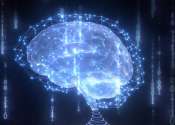New brain-like transistor performs energy-efficient associative learning at room temperature
Taking inspiration from the human brain, researchers have developed a new synaptic transistor capable of higher-level thinking.
Dec 20, 2023
0
195
Electronics & Semiconductors

Taking inspiration from the human brain, researchers have developed a new synaptic transistor capable of higher-level thinking.
Dec 20, 2023
0
195
Robotics

MIT researchers have invented a way to efficiently optimize the control and design of soft robots for target tasks, which has traditionally been a monumental undertaking in computation.
Nov 21, 2019
1
161
Software

MIT researchers have developed a bot equipped with artificial intelligence that can beat human players in tricky online multiplayer games where player roles and motives are kept secret.
Nov 20, 2019
1
79
Computer Sciences

Josh Tenenbaum, a professor of brain and cognitive sciences at MIT, directs research on the development of intelligence at the Center for Brains, Minds, and Machines, a multi-university, multidisciplinary project based at ...
Dec 14, 2017
0
49
Computer Sciences

The recommendation systems at websites such as Amazon and Netflix use a technique called "collaborative filtering." To determine what products a given customer might like, they look for other customers who have assigned similar ...
Dec 6, 2017
0
17
Computer Sciences

From phone camera snapshots to lifesaving medical scans, digital images play an important role in the way humans communicate information. But digital images are subject to a range of imperfections such as blurriness, grainy ...
Dec 5, 2017
0
694
Robotics

University of California, Berkeley, researchers have developed a robotic learning technology that enables robots to imagine the future of their actions so they can figure out how to manipulate objects they have never encountered ...
Dec 4, 2017
2
385
Electronics & Semiconductors

Memory, or the ability to store information in a readily accessible way, is an essential operation in computers and human brains. A key difference is that while brain information processing involves performing computations ...
Mar 19, 2024
0
43
Hi Tech & Innovation

Imagine performing a sweep around an object with your smartphone and getting a realistic, fully editable 3D model that you can view from any angle. This is fast becoming reality, thanks to advances in AI.
Mar 12, 2024
0
28
Machine learning & AI

Cambridge scientists have shown that placing physical constraints on an artificially-intelligent system—in much the same way that the human brain has to develop and operate within physical and biological constraints—allows ...
Nov 20, 2023
0
1121
Information processing is the change (processing) of information in any manner detectable by an observer. As such, it is a process which describes everything which happens (changes) in the universe, from the falling of a rock (a change in position) to the printing of a text file from a digital computer system. In the latter case, an information processor is changing the form of presentation of that text file. Information processing may more specifically be defined in terms used by Claude E. Shannon as the conversion of latent information into manifest information[citation needed]. Latent and manifest information is defined through the terms of equivocation (remaining uncertainty, what value the sender has actually chosen), dissipation (uncertainty of the sender what the receiver has actually received) and transformation (saved effort of questioning - equivocation minus dissipation)[citation needed].
Within the field of cognitive psychology, information processing is an approach to the goal of understanding human thinking. It arose in the 1940s and 1950s. The essence of the approach is to see cognition as being essentially computational in nature, with mind being the software and the brain being the hardware. The information processing approach in psychology is closely allied to cognitivism in psychology and functionalism in philosophy although the terms are not quite synonymous. Information processing may be sequential or parallel, either of which may be centralized or decentralized (distributed). The parallel distributed processing approach of the mid-1980s became popular under the name connectionism. In the early 1950s Friedrich Hayek was ahead of his time when he posited the idea of spontaneous order in the brain arising out of decentralized networks of simple units (neurons). However, Hayek is rarely cited in the literature of connectionism.
In the 1970s, Abraham Moles and Frieder Nake were among the first to establish and analyze links between information processing and aesthetics.
This text uses material from Wikipedia, licensed under CC BY-SA